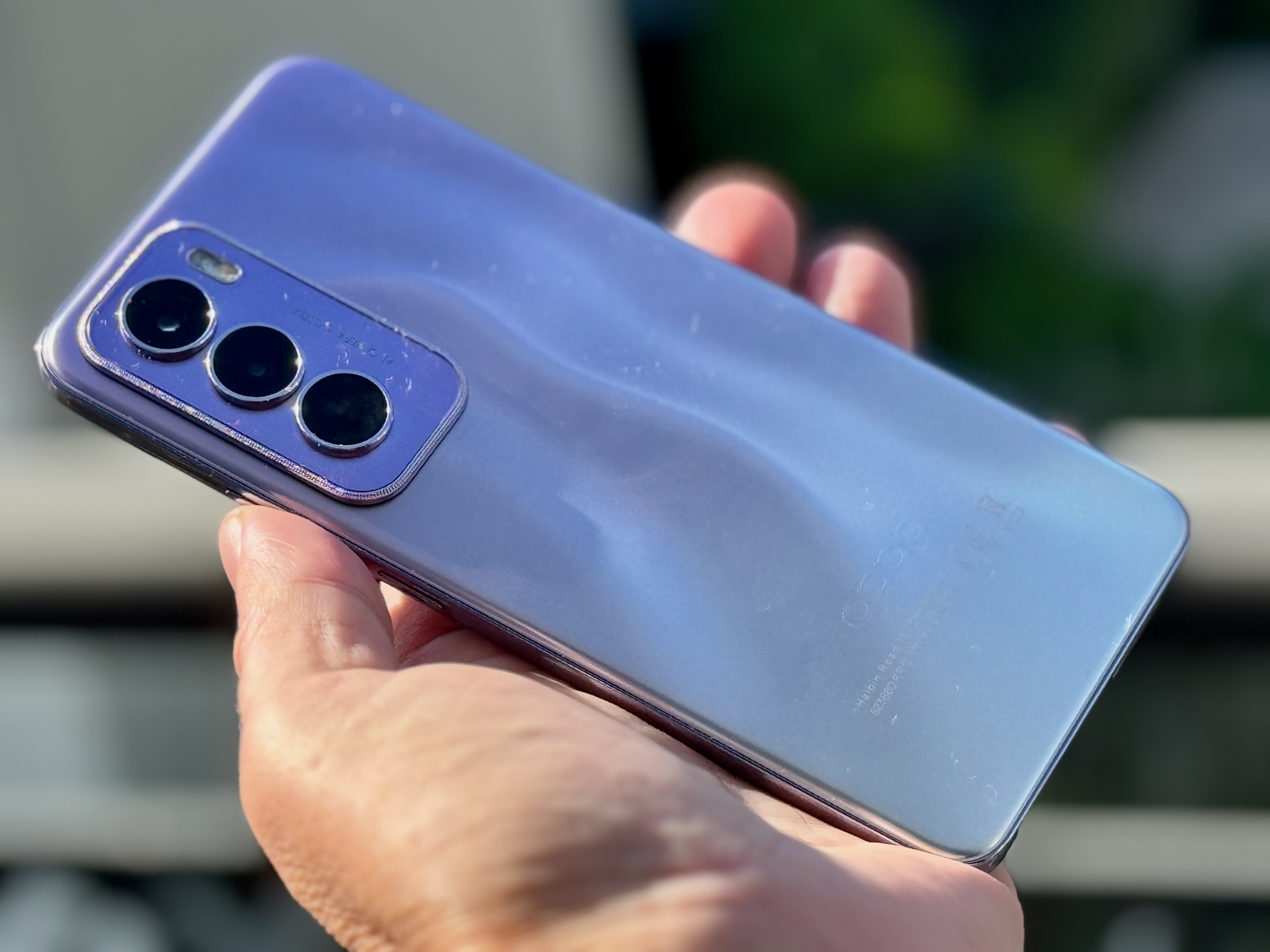
For smartphone makers, be they Apple or the diverse Android crowd, artificial intelligence (AI) must feel like such a saviour. Why? The little pocket supercomputers that most of us walk around with have become good to the level that you look at newer devices and go: “that's nice, but my old phone’s good enough for a few more years”.
Which is great for your personal finances and the environment, but not at all what smartphone vendors want to hear of course.
But then there’s AI which, if you think about it, is potentially a really useful technology to have on small handheld devices. AI can automate common tasks, make image and video editing easier, recognise sounds, identify spam and malware, and even monitor the electronics in devices to make them work better.
Smartphone vendor Oppo in China took a while to get onboard the AI train, but it now has the new Reno12 Pro that comes with a bunch of device-level implementations of the technology.
This is a mid-range phone, costing $1099 and there’s quite a bit of good stuff for the money. The device is IP65 certified for dust and moisture ingress, with a slim case with a 3D illusion back design that not only looks nice, but it doesn’t attract fingerprint smudges all that much. The colour of our device was Nebula Silver, and there's a Nebula Black model as well.

A nice 6.7-inch screen (measured diagonally) with up to 120 Hertz refresh rate and 1080 by 2412 pixel resolution is easy on the eyes on the Reno12 Pro. It’s a Corning Gorilla Glass Victus screen, over an active-matrix organic light emitting diode setup, which is much too long to say and write, and therefore abbreviated as AMOLED. It gives you a billion colour hues and high dynamic range (HDR10+), along with a promised 1200 nits brightness (yes, nits is the unit used in the context). There's a responsive fingerprint sensor built into the screen too, for biometrics.
The Reno12 Pro runs the latest Google Android 14 operating system, with Oppo’s ColorOS 14.1 interface customisations that’s neat and tidy. All the operating system and app code runs in the supplied 12 gigabytes of RAM and the Reno12 Pro we had came with 512 GB of storage which is plenty. If it’s not, there’s a MicroSD card slot that adds more storage.
Great battery life but not the fastest phone
It doesn’t really get in the way of daily use, but the MediaTek made Dimensity 7300 chipset isn’t that fast by 2024 standards. On Geekbench 6, it put in scores of 595 (single core) and 2034 (multi-core). Other benchmarks were average too.
To put that into perspective, the Oppo Find X5 Pro from 2022 manages 1400/3765 on Geekbench (bigger numbers indicate faster performance). It's not an apples for apples comparison as the Find X5 Pro is a flagship model, but long story short, the Reno12 Pro is probably not the right device if performance is paramount for you.
The flipside is that the moderate performance doesn't use much power, so you get really good battery life from the Reno12 Pro.
This is helped by the Dimensity 7300 being made with a fine 4 nanometre process, so even with four 2.5 GHz and another four 2 GHz performance and efficiency cores, and the Mali-615 graphics circuitry, the device is energy efficient. Oppo said it has developed AI models that identify user scenarios, and the ColorOS Trinity Engine then optimises resource usage to further lower power consumption.
In fact the review device would last around two and a half days between charges with light use, which is great.
Speaking of charging, some things had to be left out for Oppo to make its desired price point.
One of them was a wall-wart charger which matters more than usual in Oppo’s case: the Reno12 Pro supports the very fast 80 Watt SuperVOOC system, which, since you asked, stands for Super VOltage Open loop multi-step Constant-current charging. It’s easy to see why Oppo went with SuperVOOC and not SuperVOLMSCCC but either way, you have to get that 80 W charger separately.
With the 80 W SuperVOOC charger, you can top up to 50% in 19 minutes, and a full, 5000 mAh battery in 46 minutes. Testing suggests charging times close to the official figures are feasible. However, there’s no “wireless” charging support for Qi pads, which is one of those features that become desirable once you start using it.
Camera system mostly good
The Reno12 Pro comes with four cameras: three at the rear and one front-facing for selfies. The wide and telephoto cameras at the back are 50 Mpixel in resolution, and so’s the selfie cam. Your main shooter will be the rear wide camera, which has a Sony LYT-600 sensor.
This has the whole range of camera technology features like multi-directional phase detection auto focus (PDAF), and optical image stabilisation and takes videos at a maximum 4K resolution and 30 frames per second.

The telephoto unit has PDAF too, and a two-times optical zoom, plus there’s an 8 Mpixel ultrawide that’s fixed focus. The long story short here is that the 50 Mpixel cameras take nice photos and videos in most situations including after dark; however, the ultrawide is for daytime use only. At night it was difficult to get good pics out of the ultrawide camera.
There is also a 1080p Supersteady mode at 60 frames per second, which makes the walkie vids less motion sickness inducing:
At the default 4k 30 fps video setting using the wide lens, the camera picked up flicker from indoors lighting. This is annoying, but can probably be fixed with a software update from Oppo.
AI features for imaging and and productivity
Image editing in the on the Reno12 Pro has been given some interesting artificial intelligence (AI) features: there's AI Retouch that lets you tweak pictures, and the AI Best Shot to help ensure everyone in a group photo are in focus. They work well, along with the AI Eraser which removes unwanted objects in pictures, and the AI Image Matting that lets you select and crop out subjects.
The AI Linkboost picks the best network to connect to, Wi-Fi or mobile data, it was a bit difficult to tell what it did. Oppo is in Google's Gemini GenAI camp; the AI Toolbox added to the smart sidebar can recognise content and suggest things like social media posts, and summarise articles. Voice recognition with the AI Recording Summary tool is also supported - take a voice note, and have the Reno12 Pro create a text summary out of it.
There is a cheaper Reno12 without the Pro moniker, which sells for $799. It has a somewhat less capable camera system without the two-times optical zoom, and the 32 Mpixel selfie cam on the Pro is better than on the Reno12.
All in all, the Reno12 Pro rates as OK, but should be cheaper than the $1099 retail price to be competitive. Oppo should forget about the Reno12 and sell the Reno12 Pro at $799, which would make users who want an Android phone that's great for social media, without busting their budgets, happy.
5 Comments
Samsung A55 is way better with expandable memory slot for the same price!
Expandable memory, reminds me of the classic days of the Nintendo 64.
Oppo's new Reno12 Pro mid-range Android smartphone is long-lasting, with AI features, but needs to come down in price
Across ASEAN, China, Japan, Korea, entry into "mid range" starts from USD300.
So, what does the AI on this phone do?
Apologies, the prior version copied into the CMS missed the AI features descriptions. Fixed now.

We welcome your comments below. If you are not already registered, please register to comment.
Remember we welcome robust, respectful and insightful debate. We don't welcome abusive or defamatory comments and will de-register those repeatedly making such comments. Our current comment policy is here.